Will Slugs Eat Lobelia? Tips to Protect Your Plants
Lobelia plants are loved for their vibrant colors and delicate appearance, making them a popular choice for many gardens. If you’ve ever wondered whether slugs have an appetite for lobelia, you’re not alone. Yes, slugs do eat lobelia because they are drawn to its tender stems and leaves.
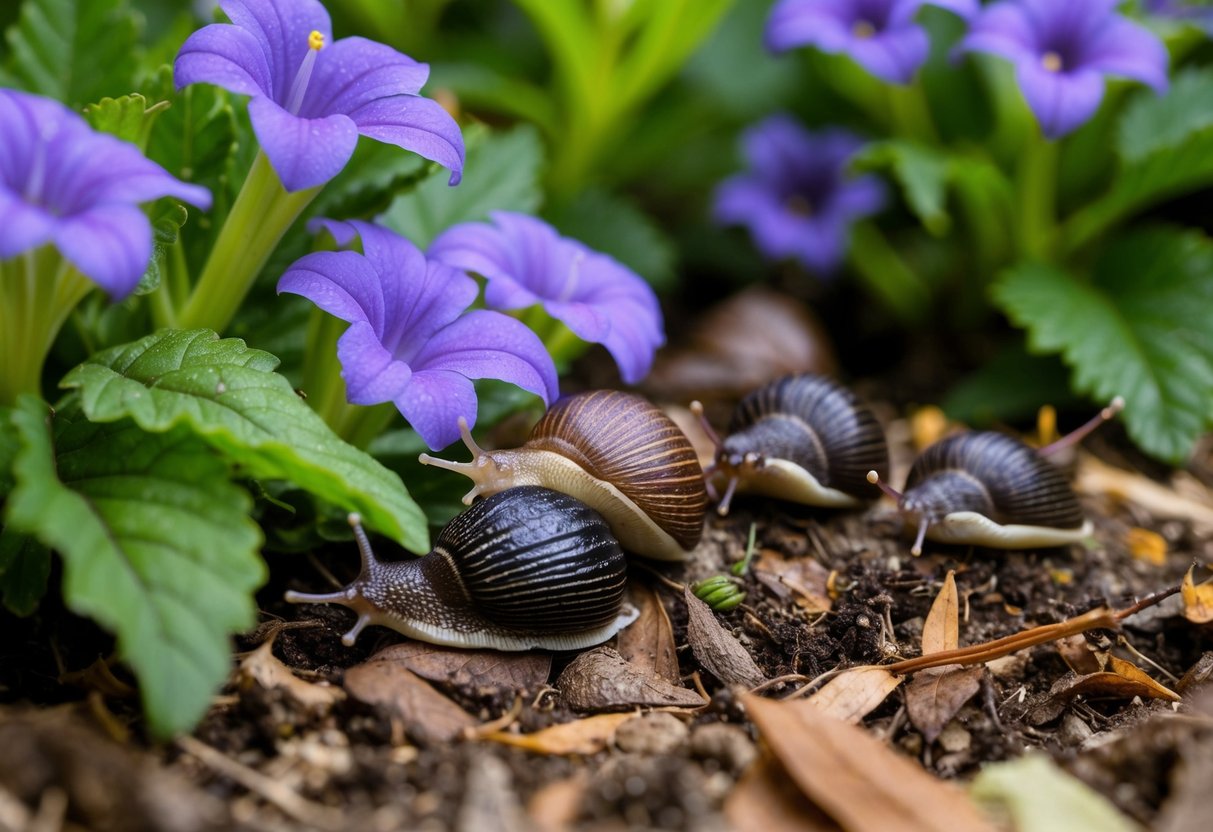
Imagine working hard to keep your garden vibrant and lush, only to find it munched on by unwanted guests. The battle with slugs can feel never-ending, especially when some plants are more prone to their nibbling ways. Knowing that lobelia can attract these pests helps you take proactive steps to protect your plants.
Don’t let slugs spoil your gardening fun. With a few tips and tricks, you can enjoy beautiful lobelias while keeping the slug population in check.
Discover how you can maintain a garden that’s both pest-resistant and stunning. You might just find that making a few small changes can lead to big improvements in your garden’s health and beauty.
Understanding Slugs and Their Diet Preferences
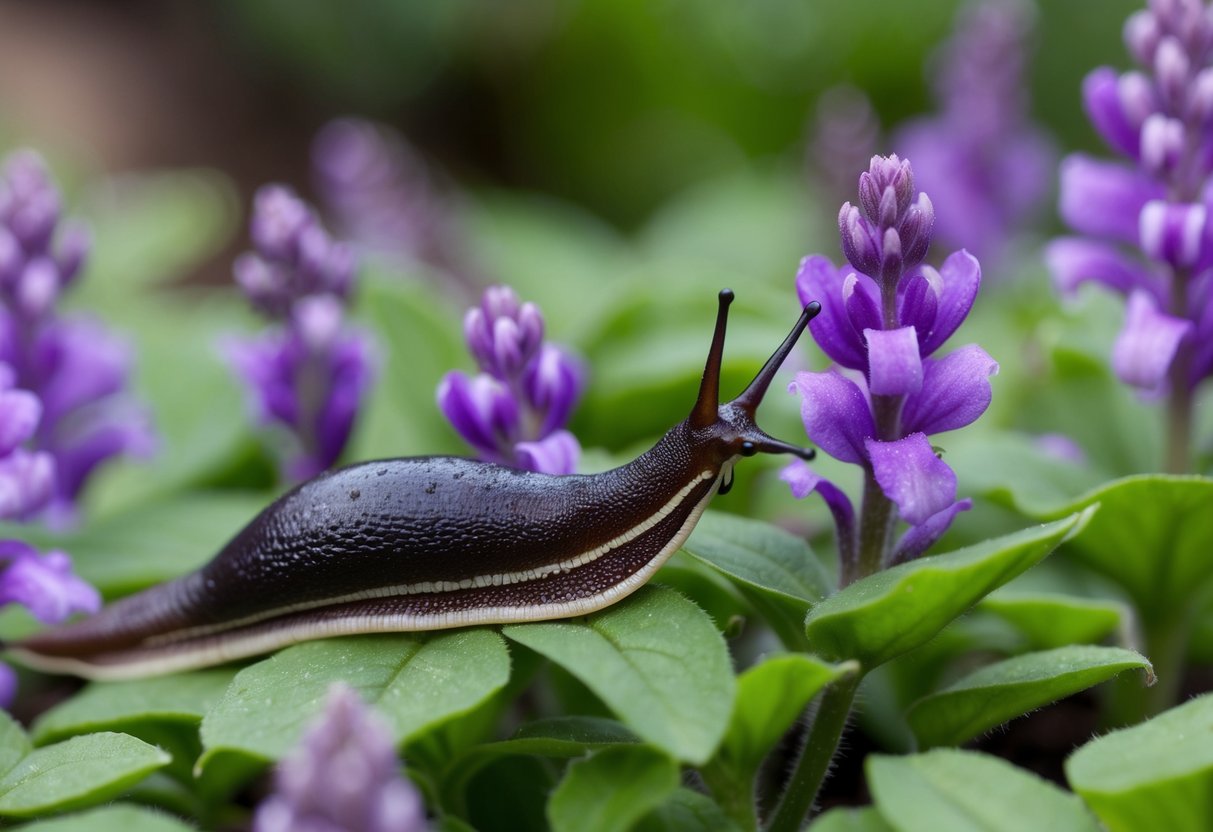
Slugs are common garden pests, often found munching on various plants. They have specific dietary habits and biological features that determine what they eat. Knowing more about these habits can help you manage slug activity in your garden.
The Biology of Slugs
Slugs are soft-bodied creatures, often mistaken for snails, but they lack a shell. These nocturnal crawlers prefer damp and shaded areas, making gardens an ideal habitat. Their bodies produce slime, which helps them move smoothly over surfaces and protects them from sharp objects.
Slugs have a unique mouthpart called a radula, a rough, tongue-like organ covered with tiny teeth. This allows them to scrape plant surfaces, leaving behind smooth-edged holes. This feeding style differentiates their damage from other pests. Their moisture-rich bodies mean they are sensitive to drought; thus, they thrive in humid environments.
Common Dietary Habits of Slugs
Slugs are not picky eaters, often targeting tender plant materials. They feast on fruits, flowers, and leaves, particularly enjoying seedlings and young plants like lettuce, cabbage, and impatiens. In addition to these, they are known to nibble on lobelia, leaving distinct damage.
Individuals looking to deter them often use mulch or synthetic pellets. Providing a water source and extra garden foliage could also unintentionally attract slugs by offering more food and shelter. Being aware of these dietary habits can help you plan effective control measures in your garden.
Lobelia and Its Characteristics
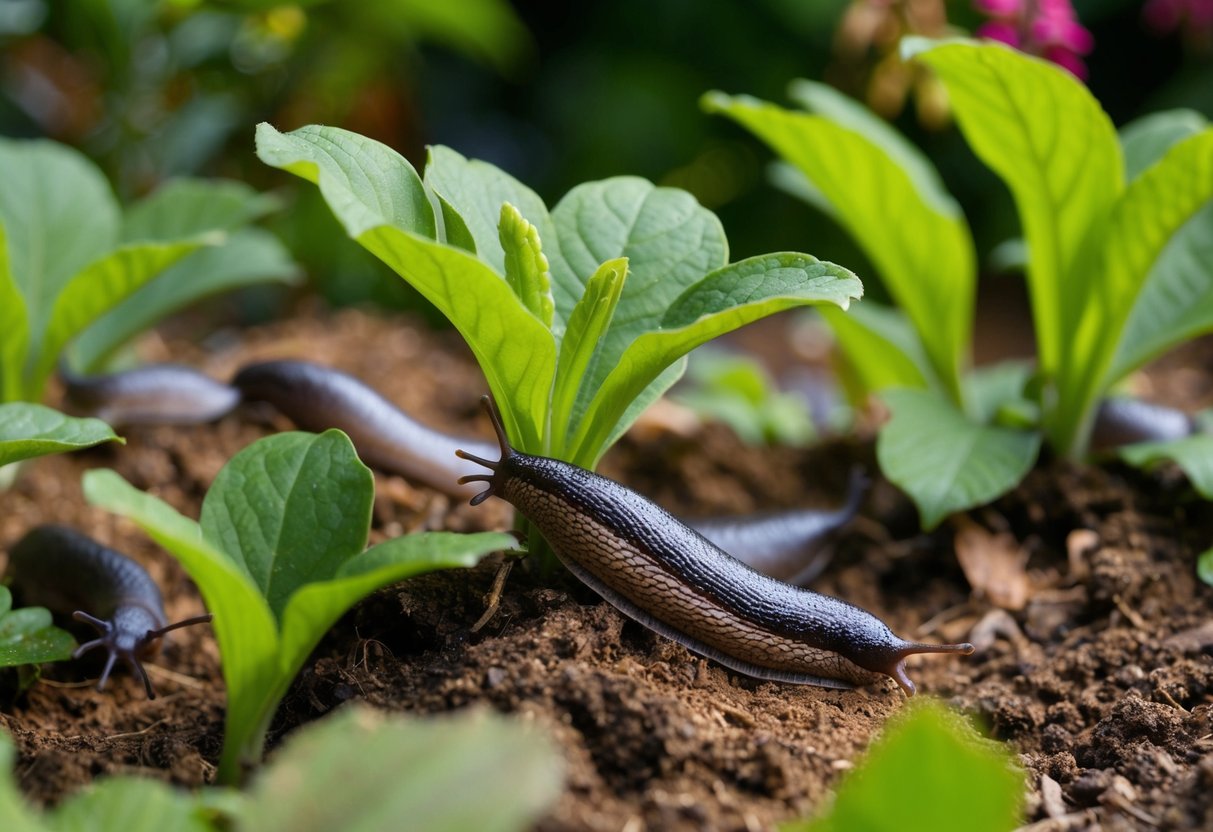
Lobelia is a beautiful flowering plant known for its vibrant colors and variety. It can be found as both annuals and perennials, each offering unique features suited to different growing conditions. Its adaptability makes it a popular choice for many gardeners.
Lobelia Varieties: Annuals and Perennials
Lobelia comes in two main types: annuals and perennials. Annual lobelias like Lobelia erinus are popular in hanging baskets and borders. They are prized for their delicate, cascading flowers, which can be blue, purple, or white. These plants complete their life cycle in one year, providing vibrant color throughout the summer months.
On the other hand, perennial lobelias such as the great blue lobelia and Lobelia siphilitica offer taller growth and are able to come back year after year. They thrive in wetter conditions and are part of the bellflower family. Their blooms attract hummingbirds and butterflies, adding both beauty and wildlife to your garden.
Growing Conditions for Lobelia Plants
When planting lobelia, it’s important to consider its growth requirements. Both types benefit from moist soil and full sun to partial shade. Annual lobelias can adapt to a variety of soil conditions but prefer consistently damp environments. This makes them excellent for container gardens where watering is frequent.
Perennial lobelias, like Lobelia siphilitica, thrive in gardens with rich, well-drained soils that stay moist. Full sun can encourage robust flowering, but they can also tolerate some shade, making them versatile in different settings. Ensuring the correct conditions will help your lobelia plants flourish and brighten your garden with their colorful displays.
Slugs Feeding on Lobelia
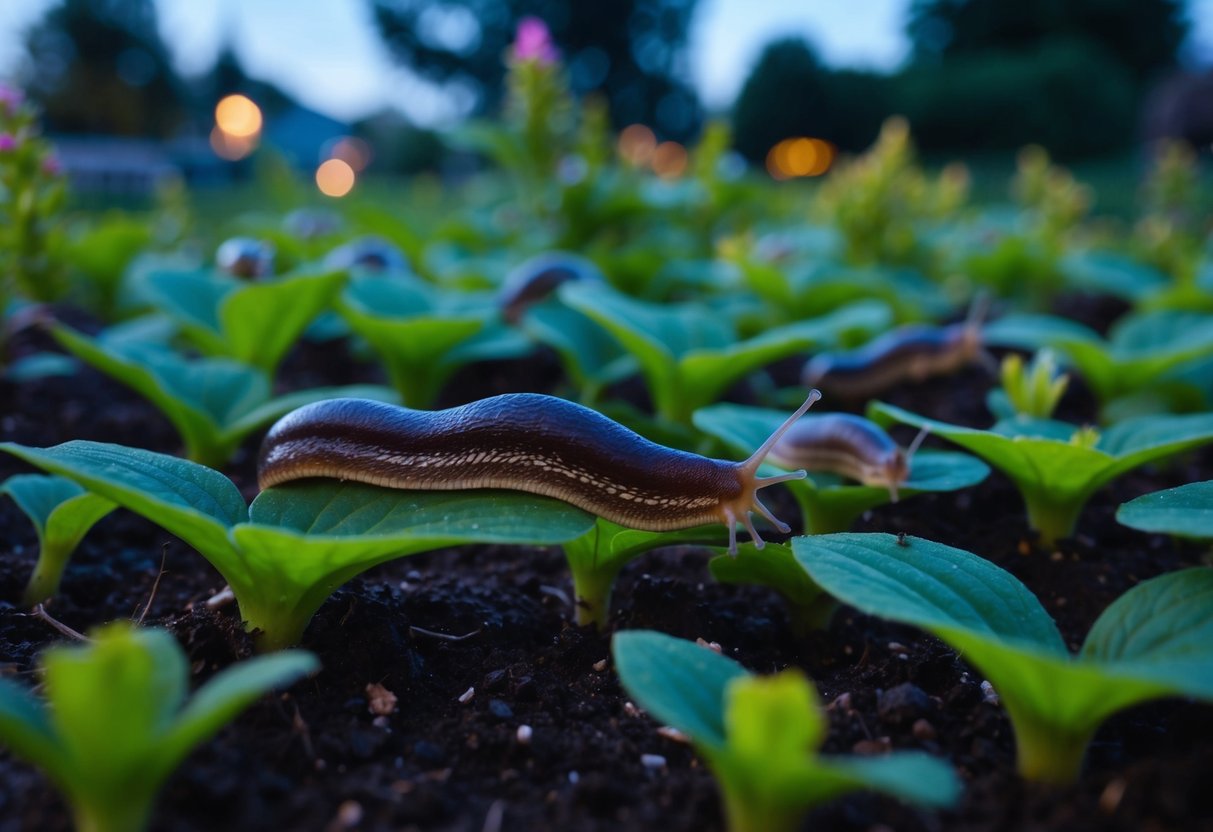
Slugs can cause significant harm to lobelia plants by eating their leaves and stems. Recognizing the signs of damage and knowing how to prevent and treat slug infestations can help keep your lobelia healthy.
Signs of Slug Damage on Lobelia
Slugs often leave telltale signs on lobelia. You might notice irregular holes in the leaves or stems. These pests are particularly fond of young plants where they can cause more damage. Slime trails are another indicator, appearing as shiny, silvery paths along stems and leaves. These trails are a clear sign slugs are lurking nearby.
You might also see leaves wilting, which can happen when slugs continually munch on the plant. Checking your plants regularly, especially in the morning or after rain, can help catch these signs early.
Preventive Measures and Treatments
To protect your lobelia, consider setting up a slug repellent barrier using copper tape or diatomaceous earth around the base of the plants. Hand-picking slugs during their active times, like early morning or after watering, is also effective. Introducing natural predators like birds or ground beetles can help control the slug population without harming your plants.
Regular fertilizing and organic matter can strengthen your lobelia, making it less appealing to slugs. Additionally, you may try homemade solutions like beer traps to lure and catch slugs. Keeping the area around your plants clean and free from debris removes hiding places for these pests.
Planting Companions to Deter Slugs
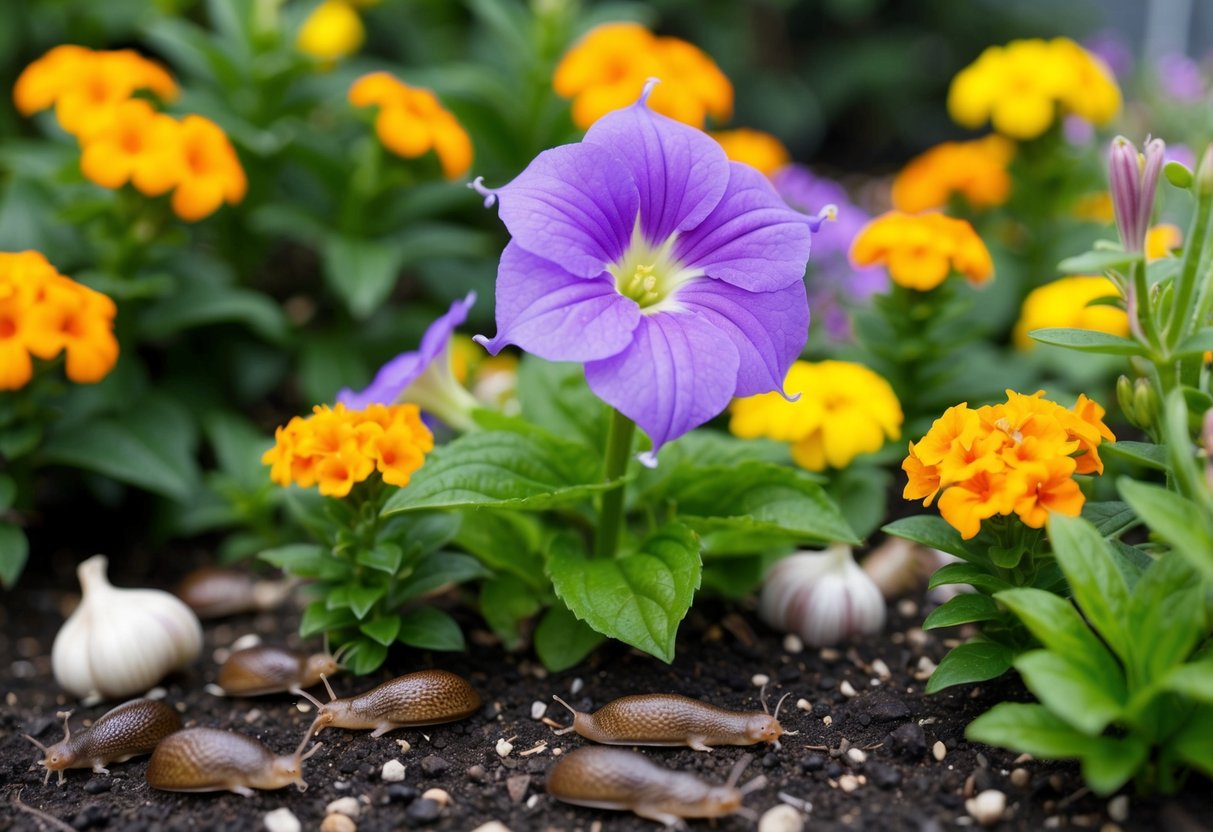
When creating a garden free of slugs, smart planting choices can make a big difference. Selecting plants that slugs dislike and designing a garden layout to naturally keep them away are essential steps in protecting your beautiful blooms.
Plants That Slugs Dislike
Slugs tend to avoid certain plants, making them great choices for your garden. Lavender and artemisia have strong scents that slugs find unappealing. Flowering plants like columbine and euphorbia are also less likely to be eaten by slugs. These plants not only deter slugs but also attract butterflies and bees, adding beauty and life to your garden.
Other plants like begonia, cyclamen, and aquilegia have textures or tastes that aren’t appealing to slugs. Including these plants in your garden can reduce slug damage and preserve your favorite summer flowers. Consider using a mix of these slug-resistant plants to protect more vulnerable species.
Creating a Slug-Resistant Garden Layout
Arranging plants in a way that deters slugs begins with strategic placement. Plant herbs like rosemary and mint near your more vulnerable plants. Their strong scents confuse and repel slugs, creating a natural barrier.
Consider incorporating slug-resistant species such as stachys or campanula around your garden edges. Position plants like cranesbills and comfrey to form defensive barriers, keeping sensitive plants safer. Creating diverse plantings with a variety of textures and heights can also help disrupt slug movement. By carefully laying out your garden, you can minimize slug invasions and enhance the health and beauty of your plants.
Supporting a Healthy Ecosystem for Pest Control

Creating a balanced garden can help manage pests like slugs. By inviting natural predators and boosting biodiversity, you can keep your plants safe and healthy.
Attracting Natural Predators of Slugs
Encouraging slug predators in your garden naturally manages these pests. Birds, frogs, and beetles love to munch on slugs. By installing birdhouses or small ponds, you’ll create habitats for these helpful creatures.
Hummingbirds and certain birds are also a beautiful addition to your space. Planting nectar-rich flowers can bring these birds to your garden. Not only do they eat pests, but they also help with pollination. Keep your garden tidy and free from excess debris to avoid giving slugs extra hiding spots.
Benefits of Biodiversity in the Garden
A diverse garden teeming with life supports natural pest control. When you plant a range of flowers, shrubs, and trees, you draw in pollinators like bees and butterflies. These creatures play a crucial role in maintaining the balance of your garden’s ecosystem.
Healthy plant variety attracts predators of harmful insects like aphids and caterpillars. Birds and ladybugs munch on these pests, reducing their numbers naturally. Encouraging different plant and animal species benefits your garden and reduces slug populations, making your space healthier and more vibrant.







